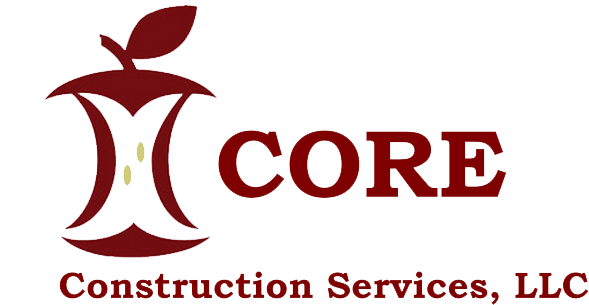Let’s face it, with all of the competition in the Construction Market today, many Construction Management firms and GC’s have developed a few tricks, to “enhance” their fees. As a Building Owner or Owner’s Rep, you need to be on the lookout for the items listed here.
Most Construction Management Firms are honest, and would not risk their reputation attempting to use any of the following unscrupulous tactics to increase their fees . . . but, we also know that margins are paper thin, and they are in this business to make a profit. These contractors value your professional relationship and have proven to be trustworthy advocates so far, right? Well, I confess that I was once one of the many that wanted to trust that my General Contractor would not utilize “hidden profit centers” to make extra fee. That was, of course, until I sat next to my GC in a contract audit and saw the “BUSTED” look on his face when he could do nothing, but admit and apologize for “accidentally” forgetting to remove several “template” profit centers. Here are a few that you should be careful to investigate during your next contract.
1) SELF-PERFORMED WORK – OR IS IT?
I’ve seen this work fall under the umbrella of “General Conditions”. Here is how the hustle works: The construction manager (CM) will develop one or more bid packages where the scope is so general in nature that there is no subcontractor willing to bid on that package. The second trick is to turn in a lump sum price to the Owner, for that work. The third one is to simply ask the Owner to authorize the CM/GC to do the work. Finally, the CM may just bill the work on a lump sum basis. General Conditions work can include: miscellaneous blocking, clean up as needed, dewatering as needed, safety protection, coordination of LEED dumpsters, and punch list coordination, etc. You can see why most legitimate subcontractors would not bid the work. It is difficult to define and/or quantify. After all, Subcontractors would have to keep a crew, including a superintendent, on the job, full-time, for the duration of the project, just in case they were needed on any given day for many of these tasks. Of course, the scheme does work better, for the CM, if they can actually get a least one bid from a real subcontractor, and it does not hurt if that bid is ridiculously high. Don’t be surprised if you find that a GC created a false sub bid for the bid package work, when an adequate amount of real bids were not available, just to make the CM’s own self-performed work bid look more advantageous and acceptable to the Owner.
There are several additional tricks we’ve seen such as:
- The CM engaging in a joint venture (JV) and one of the JV venture members took turns “bidding” on these manipulated bid packages, just to make sure both companies got their share of the additional profit.
- The CM attempting to bid out a “hoisting package” which includes cranes, man hoists, and forklifts. No subcontractor or single rental company would be willing to bid on this scope, yet that is exactly the scope that is presented to the Owner as a bid package that the CM wanted to “also” bid on as self-performed.
*The advice from one reputable auditor is to review all bid packages carefully, don’t allow any self-performed work to be performed on a lump sum basis unless there are extraordinary circumstances, and be especially wary if a bid package has one or less bidders. Also, ask for a detailed cost breakdown of the General Conditions.
2) SUBGUARD – YOU JUST “THINK” THE GC BOUGHT IT
The quoted costs by many GC’s is between 1.5{7ec620ac96511918f658223dfb856756fbd4b5e5e5a3e4b63487e7338affcd12} and 1.1{7ec620ac96511918f658223dfb856756fbd4b5e5e5a3e4b63487e7338affcd12} of subcontracts and purchase orders. However, it is no uncommon for a GC to quote SubGuard, at the same rates, as a function of total construction cost as well, not just subcontracts. It should also be noted, that Purchase Orders should not be in the calculation for SubGuard. True cost to a GC appears to be somewhere between .5{7ec620ac96511918f658223dfb856756fbd4b5e5e5a3e4b63487e7338affcd12} and .6{7ec620ac96511918f658223dfb856756fbd4b5e5e5a3e4b63487e7338affcd12} of subcontracts, but like all insurance, the risk of a default on any one project could cause the GC to be out of pocket, from the deductible costs not reimbursed by Zurich, $750,000 to more than $1,000,000 per claim. While the Owner has the protection of the GMP in these cases (meaning even if there is a sub default, the maximum amount the Owner can pay is what is in the GMP), in many cases, CM’s are doing the same thing and pocketing as much as 1.2{7ec620ac96511918f658223dfb856756fbd4b5e5e5a3e4b63487e7338affcd12} of the subcontract values from the unsuspecting Owners. When working on projects greater than $50,000,000 in value, it is often useful to try to calculate what the actual subcontractor bond cost would be, and then refuse to pay $1 more than that, at a minimum. SubGuard is supposed to be a cost savings for the project – Not a revenue stream for the CM.
3) PAYROLL BURDEN – WHAT IS YOUR EXPOSURE?
Many GC’s overstate one or more items within the payroll burden charge. One way to overstate cost is to include costs that are not otherwise reimbursable (bonuses based on profitability for instance). Another way is to simply overstate the true cost of an item, like health insurance, pensions, or taxes. Additionally, a GC could simply charge some items both directly, as salaries, and also as a payroll burden item (vacation and holidays are typical). The best way to manage these issues is to make the contract clear, don’t agree to a fixed payroll burden rate, and perform a pre-audit (you save in the end).
4) SHARED SAVINGS – DON’T TRUST IT!
What sounds like a good idea often ends up with a GC manipulating estimates and bids to “create” savings which yield a bonus. For example, I’m told of a recent project that had the GC billing a $500,000 shared savings bonus. Review of the original GMP estimate showed that the GC had increased the subcontractor bid amounts by $1,200,000 prior to preparing the GMP thereby creating savings and “earning” a shared savings bonus. Some Owners allow a stated contingency to be added to the GC’s estimate of costs. However, occasionally, the Owner forgets that the shared savings provisions may apply to those funds as well, and ends up paying a bonus for estimated padding that the Owner allowed.
These are just “SOME” of the tricks of the trade. There are several other tricks like early completion bonuses, contractor controlled insurance programs (CCIP), and including insurance deductibles in the GC fee.
Hopefully, this information proves to be worth consideration while developing your next General Contractor or Construction Manager contract agreement. Most Construction Management Firms are honest, and would not risk their reputation, or your relationship, attempting to use any of the tactics described here. Unfortunately, it is the responsibility of the Building Owner or Owner’s Rep to insure that none of these tactics are used on your projects.
What is your experience with Enhanced Fees? I’d love to hear about them in the comments section below.


